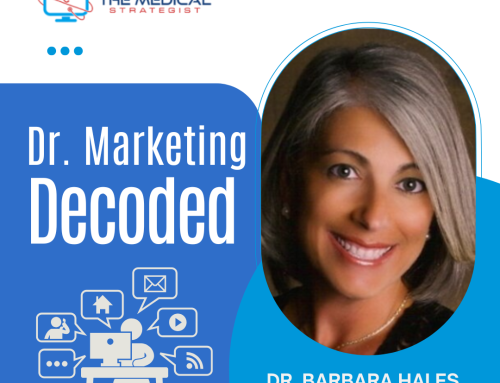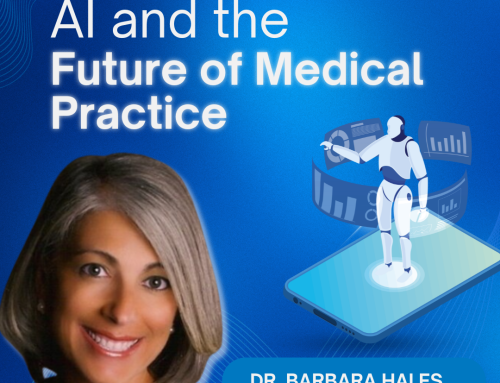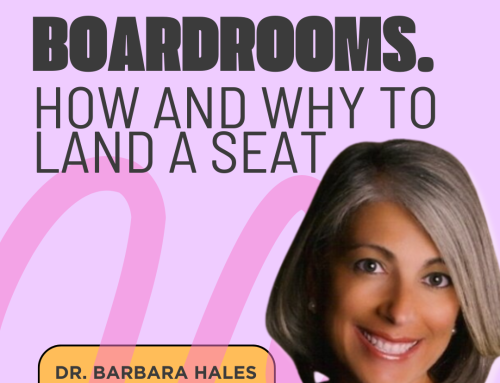Podcast: Play in new window | Download
Subscribe: RSS
In this episode, Barbara discusses:
- Learning the difference between telling a good story versus a great story.
- Michael’s Hauge story telling formula to help sell your brand and attract new clients.
- How to elicit emotion in order to draw clients to your practice.
Key Takeaways:
- People make emotional decisions then rationalize them with logic.
- Stories are going to attract prospective patients and clients and engage the ones you do have.
- Every story has a structure. Create a beginning, middle and end with a successful resolution involving your services.
“If patients can see themselves as examples in your story, they’ll be more likely to connect with you emotionally.” — Barbara Hales
Transcription
Barbara Hales: This is Doc. Barbara Hales, your host of Marketing Tips for Doctors. Today, we are bringing you an episode talking about storytelling. Have you ever considered what makes a story great and what makes somebody a good storyteller? It’s something that we do naturally starting from the time we’re young, but, as you know, there is a difference between good storytelling and great storytelling.
A good way to determine that is when you go to a cocktail party and you’re telling a story. Are people connecting with you and hanging on your every word, or are they nodding absentmindedly and then saying, “Excuse me,” while they go to dip or to another group that’s gathering?
One of the best storytellers around is Michael Hauge, H-A-U-G-E. He is considered a Hollywood story expert who is consulted on projects for every major Hollywood studio, including films starring Will Smith, Julia Roberts, Morgan Freeman, and Reese Witherspoon among others. Is he someone that you have not heard of? I’m not surprised because he is really a down-to-earth guy and he keeps a low profile.
Well, Michael has a six-step success story formula that gives your potential clients and patients the emotional experience success and will move them to take action. What does that mean for you? Well, after hearing your story, they’ll agree to the procedure that you recommended or the medication and will be more compliant, or you will drive new people to become your patients instead of just prospective ones that go to someone else. Stories are going to attract prospective patients and clients and engage the ones you do have.
In terms of the benefits of stories, evolution has wired our brains for storytelling, ever since we swapped stories around the fire pit as cavemen. Telling a great story changes the way your prospects think and engage with your brand. People remember your stories 22 times more than the stats that you present. Putting your message into the story enables your listeners to remember them and want to further connect with you.
There are four types of stories. Practicing each one of them effectively creates viral spread and increases your visibility. They are attention, emotion, belief, and memorability. As a leader, incorporating stories into your website, blogs and newsletters better engage your audience. If patients can see themselves as examples in your story, there’ll be more likely to connect with you emotionally.
That is why case studies work so well, and as physicians there are so many opportunities for you to illustrate case studies. People came to you, they were not feeling well, they didn’t look well, and after your procedures, your medication, your treatments, they walk out of your office looking good and feeling good.
So, the first type of story is the one eliciting attention. Stories and studies show that stories trigger the release of neurochemicals like oxytocin and cortisol. Cortisol is released as a reaction to stress. You know, your flight or fight hormones, which shows that you are reacting as though you’re in the story that you are reading or hearing about. Oxytocin is linked to emotions. The more you are involved in the story, the greater will be your empathy for the characters in it. The ultimate key is using cliffhangers at the end of each episode to make people come back for more.
The second type of story is regarding emotion. Our brains act like stories are real and have real physiological reaction to them, whether it is a scream at horror movies, smile at corny romances, or cry at sad stories. Okay, admit it. You have shed a tear or two when you saw a sad movie or read a sad story in a book. A story makes you feel what the hero of the story is feeling. We make emotional decisions and then rationalize it with logic. So, eliciting emotion is a powerful tool, one that will get patients drawn to you.
The third type of story regards belief. Stories are powerful when you get listeners to nod their heads and say, “Me too.” As they engage with you, they’re believing the same things that the characters are. As the character gets a realization, you are transferring your beliefs to your listeners. In fact, stories activate parts in the brain that make listeners feel like the story was a part of their own experience. If you can transfer your beliefs about your services, then prospective patients will want to use them. They’ll want to connect you and hear further messages from you.
The last type of story is memorability. Stories engage more of our brain than fact. Long after people forget what you said, they will remember how you made them feel. Do you remember that quote? Now, characters are at the heart of every film and every story. They’re the individuals we follow on the journey of every story. And there is a structure to it, whether it’s presenting a mess that leads to success or something has a beginning, something happens, and an end, or in romance, two people meet, they fall in love, life gets in the way, and they separate, and at the end they come back together. There is a story structure that most successful stories follow.
Now, while telling this story involves words and structure, you may consider creating videos, which are even more powerful for your prospective patients and current patients to see. It will get you more following and more people involved by viewing the stories.
Crafting your stories work best on your blogs as part of your website. You do have a website, don’t you? If not, or you are not seeing the results that you hoped for, arrange for a discovery call with me at Barbara@themedicalstrategist.com.
Well, this episode was about storytelling with me, Dr. Barbara Hales, your host of Marketing Tips for Doctors. Until next time.
Connect with Barbara Hales:
Twitter: @DrBarbaraHales
Facebook: facebook.com/theMedicalStrategist
Business website:www.TheMedicalStrategist.com
Show website: www.MarketingTipsForDoctors.com
Email: Barbara@TheMedicalStrategist.com
Books:
- Content Copy Made Easy
- 14 Tactics to Triple Sales
- Power to the Patient: The Medical Strategist
YouTube: TheMedicalStrategist
LinkedIn: www.linkedin.com/in/barbarahales



